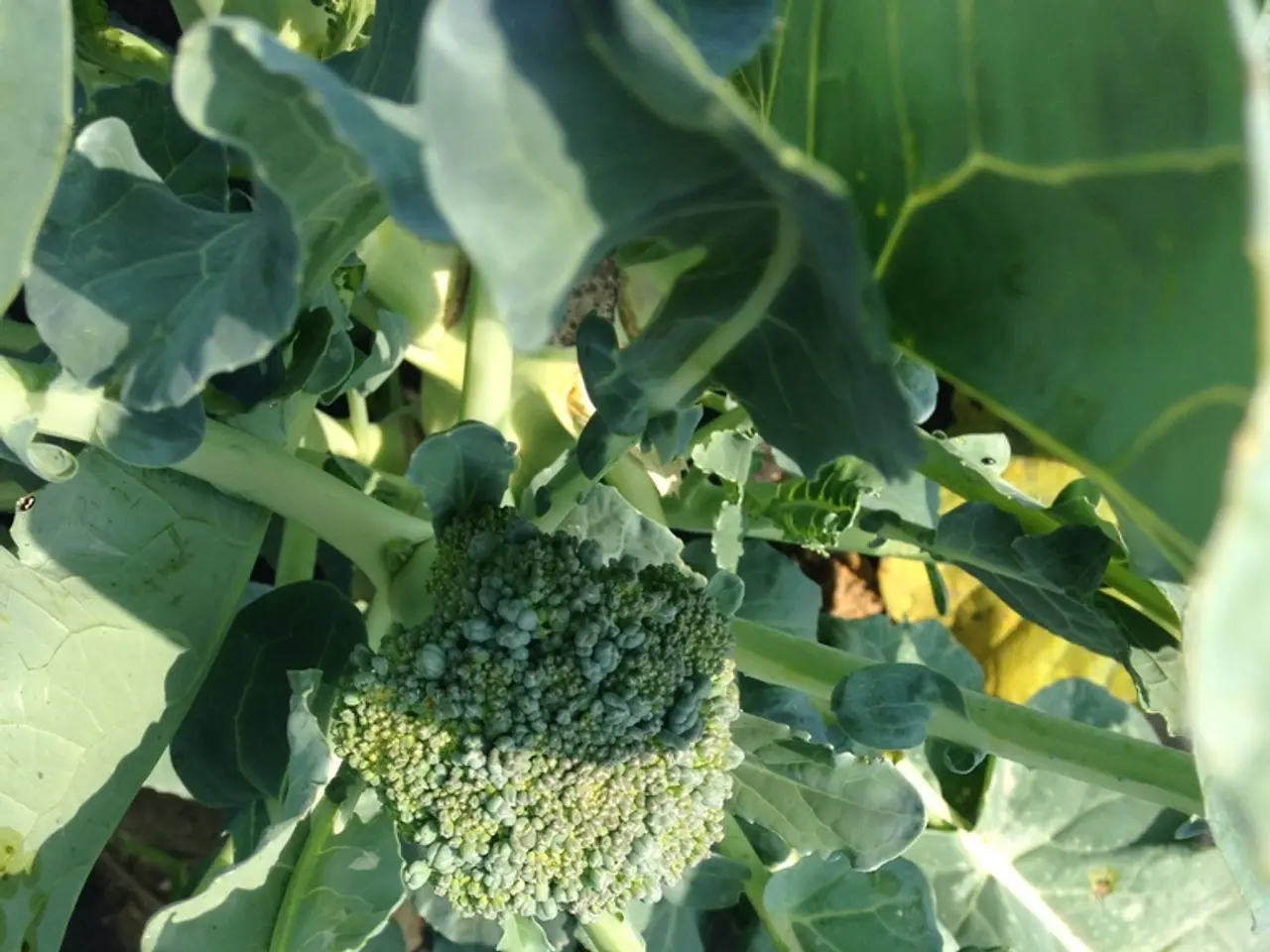Recognizing the Ideal Time for Broccoli Harvest: 5 Crucial Indicators
Growing and Harvesting the Perfect Broccoli: A Guide for Green Thumbs
Broccoli, a popular vegetable known for its nutritional benefits, is a delight for gardeners who appreciate cool-season crops. With the right care and attention, you can grow and harvest a bountiful broccoli crop that will add a burst of freshness to your meals.
Soil Preparation and Planting
To set the stage for a successful broccoli harvest, start by preparing well-drained soil with a pH between 6.0 and 7.0. Enriching the soil with organic matter can improve its fertility and structure. Sow seeds indoors 6-8 weeks before the last spring frost or directly sow in late summer for a fall crop. Transplant seedlings outdoors when they are 4-6 weeks old and soil temperatures are at least 50°F (10°C) to 60°F (15°C). Space plants to prevent overcrowding and promote airflow, reducing disease risk.
Temperature Management
Broccoli thrives in mild temperatures, with daytime temperatures ideally between 65°F and 75°F. To avoid heat stress, schedule planting for early spring or fall. To protect from unexpected late cold snaps, use coverings like garden cloth or plastic domes during early transplants or late fall.
Watering and Support
Maintain consistent soil moisture, especially during bud development, aiming for about 1-2 inches of water per week. Avoid waterlogging, as broccoli roots prefer well-aerated conditions. Provide physical support such as stakes to prevent the tall plants from toppling in windy conditions.
Pest and Disease Management
Regularly inspect for pests like aphids and caterpillars and fungal diseases (powdery mildew, downy mildew). Use natural deterrents (e.g., companion planting with marigolds) or targeted organic treatments as needed.
Harvest Timing
Harvest main heads when they are firm, tight, compact, and deep green, typically 70-100 days after sowing. Ideal head size is about 4-7 inches in diameter. Harvest in the morning when temperatures are cooler to better retain freshness. Cut the head just below the flower cluster to encourage side shoots, enabling an extended harvest period.
Post-Harvest Handling
After harvesting, promptly cool broccoli to preserve quality. Store in the refrigerator with high humidity to maintain freshness and delay yellowing of the florets. Handle heads gently to avoid bruising, which can accelerate spoilage.
By following these strategies—preparing well-drained, fertile soil; timing planting to avoid heat; maintaining steady moisture; timely harvesting when heads are compact; and careful post-harvest cooling—you can optimize broccoli yield and quality.
When harvesting broccoli, use a sharp knife to cut the stalk at a 45-degree angle, about 5-6 inches below the head, to promote healthy regrowth. Smaller side shoots will develop for a secondary harvest after cutting the main head. To get the best flavor and texture from broccoli, it should be picked when the heads are firm and the buds are tight, before the yellow flowers start to bloom.
In conclusion, growing broccoli successfully requires careful planning and attention to specific details such as choosing the right variety, soil preparation, and managing temperature conditions. With the right care, you can enjoy a bountiful harvest of fresh, delicious broccoli all season long.
- A flourishing home-and-garden, complete with a variety of cool-season crops such as broccoli, can significantly enrich your lifestyle.
- By adopting techniques such as soil enrichment, temperature management, pest and disease control, and proper harvesting methods, you can cultivate a thriving garden full of healthful, homegrown broccoli plants that offer a burst of freshness to your meals.




